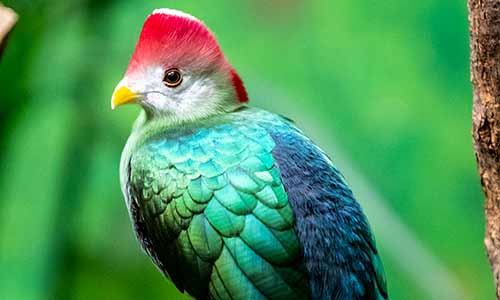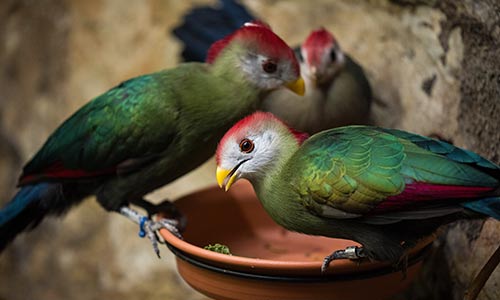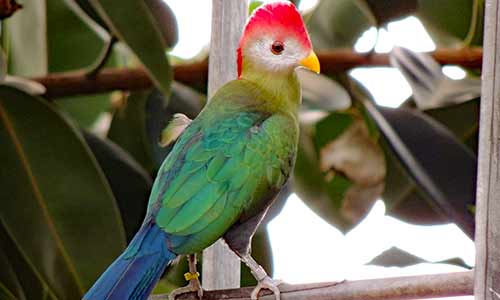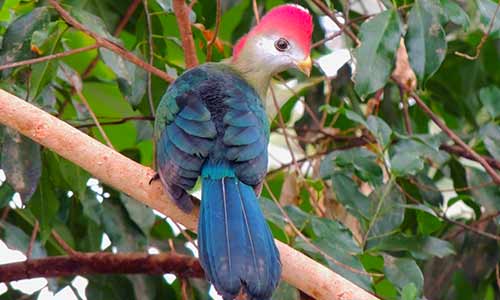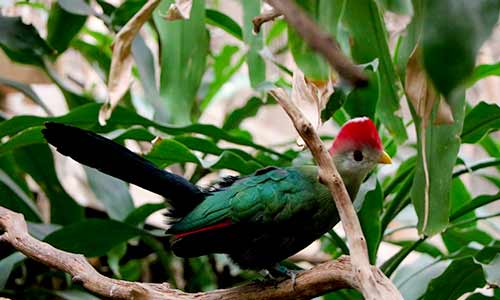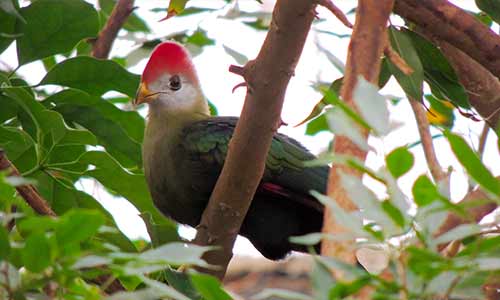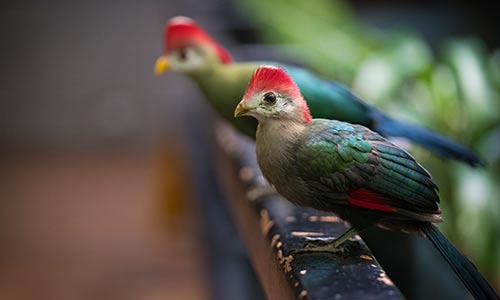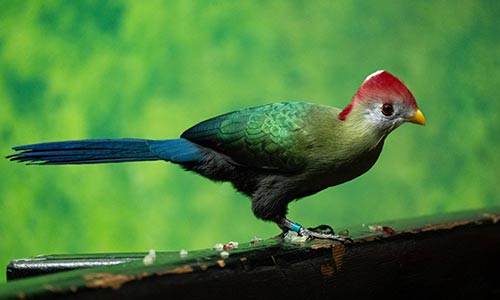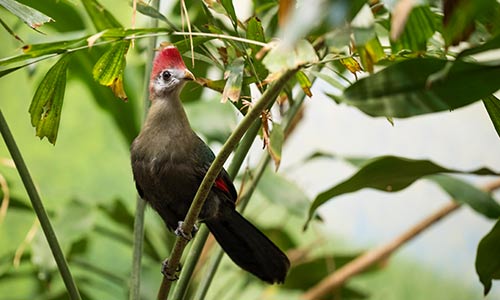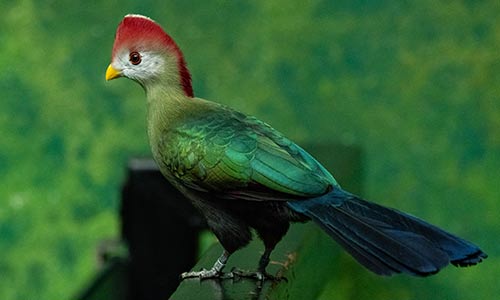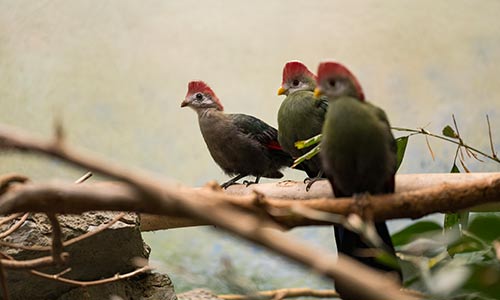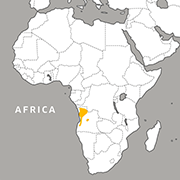Appearance:
Both males and females are brillant green in color with crimson, white-tipped crest feathers on the top of the head, a yellow beak, and darker bluish-green feathers on the back and rear.
Size:
Adults can grow to be 14-17 inches in length.
Diet:
These birds are thought to enjoy fruits and berries in the wild, but little is actually known of their foraging habits.
Mating and Reproduction:
Females lay eggs usually between the months of April and October, and both the male and female in a mating pair work together to incubate the eggs upon a nest of twigs. Chicks are born with thick, black down feathers, and they begin growing green and red feathers when they're approximately 25-30 days old. By the age of four months, chicks are in full adult plumage like their parents, although they're still dependent on their parents for several months.
Behavior:
This species remains in the trees for the majority of their day, making up for their poor flying skills with plenty of hopping, jumping and gliding from treetop to treetop. They usually live in pairs and fiercely defend their territory in the trees, only descending to the forest floor to drink or bathe.
Habitat/Range:
These birds inhabit evergreen and riverine forests of central Africa.

